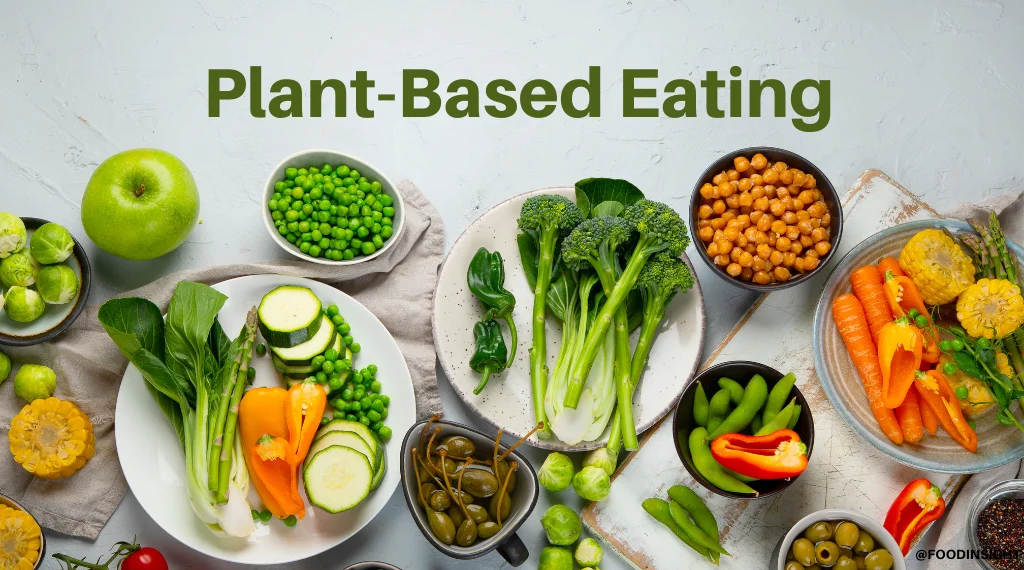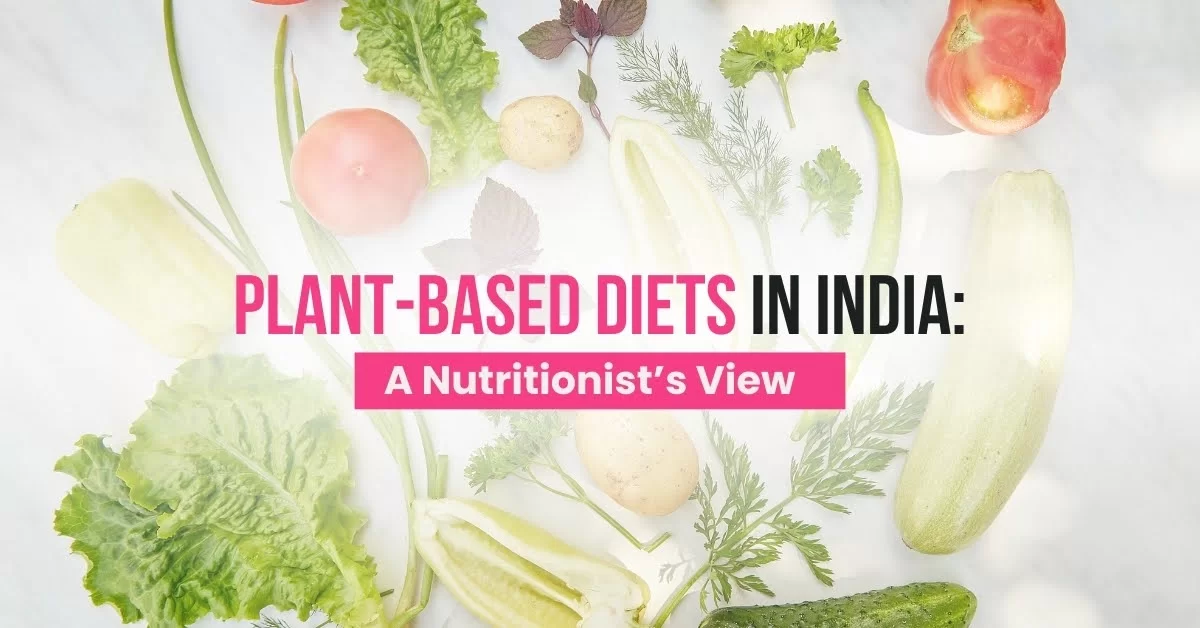Switching to a plant-based diet is one of the best decisions you can make for your health, the planet, and animals. In India, this switch is easier than in many other places because our traditional meals already include lots of plant foods.
This guide will help you understand what a plant-based diet is, how to begin it step by step, and how to enjoy your meals without missing anything. Whether you’re looking to go fully vegan in India or just eat more plant-based meals, this is for you.
What is a Plant-Based Diet?

A plant-based diet focuses mainly on foods that grow from the earth. It includes:
- Vegetables
- Fruits
- Whole grains
- Lentils and legumes
- Nuts and seeds
It avoids or limits animal products such as:
- Meat and fish
- Eggs
- Dairy (milk, curd, paneer, ghee)
It’s different from being vegetarian. A vegetarian might still eat dairy or eggs. A vegan or fully plant-based person avoids all animal products.
Also Read 10-Minute Plant-Based Breakfasts
Top Benefits of a Plant-Based Diet
People choose a plant-based lifestyle for many reasons. Here are some powerful benefits:
Healthier Heart
Plant foods are low in saturated fats. They help lower cholesterol and blood pressure.
Better Digestion
Plant foods are full of fiber. They keep your stomach happy and regular.
Healthy Weight
High-fiber foods make you feel full for longer. This helps with weight control and fat loss.
Diabetes Management
Whole grains, fruits, and dals help control blood sugar levels.
Glowing Skin and Hair
Vitamins and antioxidants in fruits and vegetables improve your skin and hair health.
Eco-Friendly Lifestyle
Eating fewer animal products reduces pollution, water use, and saves natural resources.
What to Eat on a Plant-Based Diet in India
Here are the main foods to focus on:
Vegetables
Spinach (palak), bottle gourd (lauki), brinjal (baingan), okra (bhindi), carrots, pumpkin, etc.
Fruits
Mangoes, bananas, apples, papayas, guavas, oranges, and seasonal fruits.
Whole Grains
Brown rice, millets (ragi, jowar, bajra), oats, broken wheat (daliya), and whole wheat flour.
Pulses and Legumes
Toor dal, moong dal, rajma, chana, masoor dal, urad dal, lobia, etc.
Nuts and Seeds
Almonds, cashews, peanuts, walnuts, chia seeds, flax seeds, sesame (til), and sunflower seeds.
Dairy Replacements
Coconut milk, almond milk, soy milk, oat milk, and vegan curd/yogurt.
Key Nutrients to Watch
Eating only plant foods? Then you need to watch a few key nutrients.
Vitamin B12
This vitamin is not found in plants. You need to eat B12-fortified foods or take a supplement.
Protein
Get protein from dals, chana, tofu, tempeh, peanut butter, and nuts. Mix different sources each day.
Calcium
Use sesame seeds (til), leafy greens, ragi, almonds, and fortified plant milks.
Iron
Iron is found in dals, spinach, jaggery, and whole grains. Eat citrus fruits to help absorb it better.
Vitamin D
Get some sun daily. Or take a plant-based supplement if needed.
Indian Plant-Based Meal Plan (7 Days)
Here’s a sample weekly plan with simple, home-style plant-based meals:
Day 1
- Breakfast: Oats porridge with almond milk and banana
- Lunch: Rajma with brown rice and salad
- Dinner: Tofu sabzi with multigrain roti
Day 2
- Breakfast: Besan chilla with coriander chutney
- Lunch: Quinoa pulao with mixed veggies
- Dinner: Moong dal soup with toast
Day 3
- Breakfast: Mango and spinach smoothie with flax seeds
- Lunch: Millet khichdi with coconut curd
- Dinner: Stuffed capsicum with chana filling
Day 4
- Breakfast: Idli with peanut or coconut chutney
- Lunch: Palak chana curry with chapati
- Dinner: Stir-fried veggies with tofu and rice
Day 5
- Breakfast: Chia pudding with fruits and dry fruits
- Lunch: Lemon rice with sprouts salad
- Dinner: Baingan bharta with jowar roti
Day 6
- Breakfast: Poha with peanuts and coriander
- Lunch: Kitchari with ghee substitute and pickle
- Dinner: Mixed vegetable curry with paratha
Day 7
- Breakfast: Vegan smoothie bowl with granola
- Lunch: Masoor dal with steamed rice
- Dinner: Vegan biryani with soy curd
Tips to Begin a Plant-Based Lifestyle
Starting can feel confusing. These tips will help:
- Start slow – Switch one meal per day first.
- Eat desi meals – Use dal, sabzi, and roti combos.
- Avoid junk vegan food – Focus on whole foods, not processed items.
- Read food labels – Watch out for hidden animal products.
- Prepare meals ahead – Batch cook dals, cut veggies.
- Join plant-based communities – Get support, recipes, and tips from others.
Frequently Asked Questions (FAQs)
Q1: Is plant-based food easily available in India?
Yes. India already has many vegan and vegetarian options. Dals, vegetables, fruits, and grains are found in every kitchen.
Q2: Is plant-based food expensive?
No. Staples like dal, rice, vegetables, and fruits are budget-friendly. Only imported plant milks or vegan meats cost more.
Q3: Will I get enough protein?
Yes. Combine different plant proteins like dals, soy, and nuts throughout the day.
Q4: What should I eat when traveling?
Carry roasted chana, nuts, or homemade sandwiches. Look for veg thalis, poha, dosa, or veg pulao at restaurants.
Q5: What if I crave dairy or meat?
It’s okay. Don’t aim for perfection. Try plant-based versions or reduce slowly.
Final Thoughts
Switching to a plant-based Indian diet is not just healthy — it’s enjoyable and deeply rooted in our culture. With a little planning, you can enjoy tasty meals, meet your nutrition goals, and feel better inside and out.
Don’t worry about being perfect. Even one plant-based meal a day makes a difference. Start where you are. Move forward step by step.
Author- Ayush

I’m really enjoying the design and layout of your site. It’s a very easy on the eyes which makes it
much more pleasant for me to come here and visit more often. Did you hire out a designer to
create your theme? Superb work!